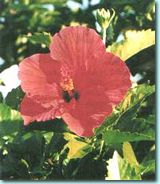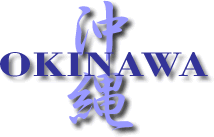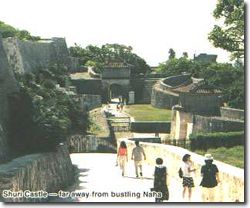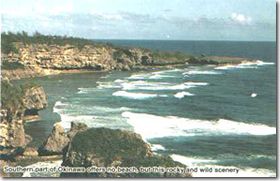|
Landing at Naha Airport in Japan's southernmost prefecture feels like alighting smack bang in the middle of Hong Kong or another south-east Asian center. If you don't think Naha is the epicenter of a feverish activity, just wait until you meet the traffic, on an island where every islander owns a motor vehicle. Public transportation covers the length and breadth of the island, but maybe not when you want to go. We recommend renting a car or scooter in town or at the airport. Just be careful at the big crossings -- lanes tend to disappear into nowhere and a four-lane road mysteriously becomes two-laned after you cross. what the sea offers The
beauty of the sea around Okinawa has probably influenced your choice of
destination. But unlike tourists, Okinawans live by the seasons -- if
it is what is officially termed winter there, they don't swim at least
in the sea. But tourists don't care about seasonal customs, only about
temperature, and the sea around Okinawa never gets too cool for a non-seasonal
dip. Many of the most attractive beaches charge you 500-600 yen for their services (parking, sun chairs, etc.). The scenery is fantastic and there are coral reefs everywhere along the west coast on Route 58. You'll certainly understand why the posh and glamorous resort hotels popped up right there -- and regret it. For isolated beaches, you have to leave the main island. tourist traps Shuri, east of Naha, was the capital during the prosperous Ryukyu Kingdom until 1879. Okinawa was then one of the important trading centers of the Asian-Pacific region, and Ryukyu culture flourished. The castle, overlooking the island, is influenced by Chinese architecture, especially Shurimon Gate. Now the main palace is totally restored. The kings probably wouldn't have complained, but the smell of paint prevented us from imagining the Ryukyu Kingdom in its full glory. |
Although touring the memorials to the battlefields of Okinawa half a century ago isn't on many visitors' itineraries, these war monuments scattered on top of headlands offer a better reality check then many historical glories. Kokusai-dori is the main street of Naha, Okinawa's capital, and the place for shopping, eating and hanging out. "Thanks" to the U.S. military presence, the Rambo look is easy to find in the many specialized boutiques. Right in the middle of this cultural impetuosity, Okinawan rock star Kina Shokichi's Live House/Restaurant blasts jam sessions with local musicians. Undoubtedly it is better to roast on the beach than in the concrete and there are many events that are bound to attract you. From the Cherry Blossom Festival in Nago in late January -- Japan's earliest, to Okinawa Festival in the autumn where a favored pouting beauty is to be crowned Miss Okinawa, there is always something going on. For people who want to fight the elements and their own physical condition, the brave ones can try out the Japanese Hang Glider Championship Meet, Manza Dragon Boat Racing Festival, Naha Marathon -- Japan's southernmost, and Tour de Okinawa -- a cycle race on mountain roads. o-miyage obligations When you leave the pool or beach for the compulsory o-miyage shopping to keep the landlady happy back in Tokyo, typical Okinawan souvenirs/handicrafts include the brightly colored glass, pottery, dyed fabrics, coral works (necklaces, rings and earrings the darker red the more valuable), pearls, lacquer ware, sake -- with or without the poisonous snake habu -- and sweets containing tropical fruit. Shop clerks do anything within the bounds of public morality to make you stay in their shop and push you to buy. This is far cry from Tokyo, where shop clerks usually leave you alone, especially when you ask for assistance. For more indigenous souvenir shopping, go to the markets where the smiling amma, or sales women, sell just about everything. If all this shopping for one reason or another fails, then go to Okinawa Ginza Washita Shop which you find on the right corner if you walk along the street from Printemps Dept. Store in Yurakucho towards Tokyo Station. They store about everything and it is very easy to spend a "man" (10,000 yen) or two. |
 |
Okinawa
Home Page
(URL:
http://museum.mm.pref.okinawa.jp) |
| Japan
Airlines
(Nihon Koukuu) (URL: http://okinawa.jal.co.jp) ANA (All Nippon Airways/Zen-Nikkuu) (URL: http://www.ana.co.jp/okinawa) |
|


